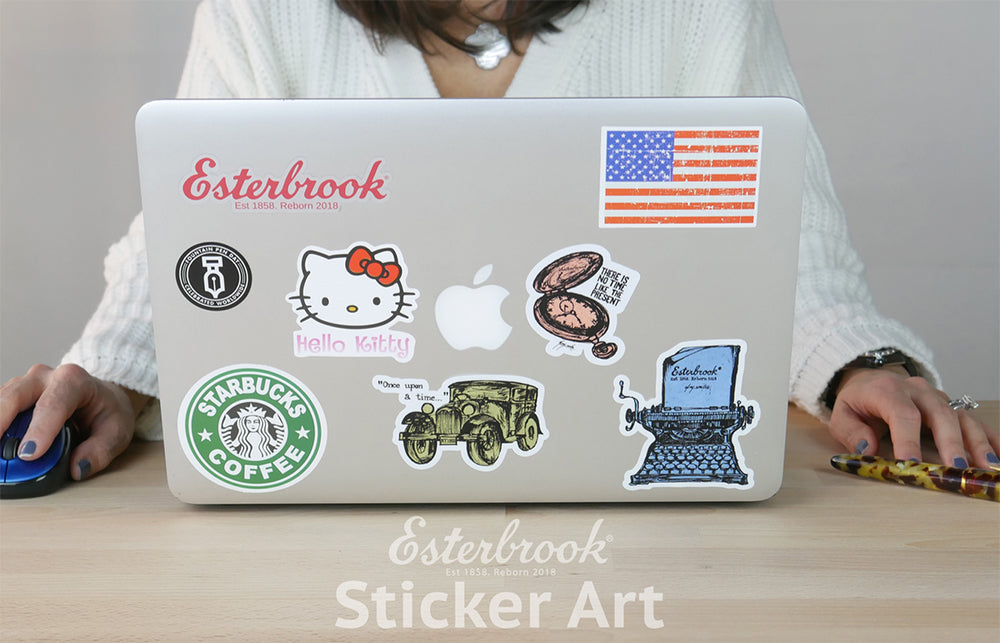A collaboration of two iconic American brands The crackle of transatlantic broadcasts joins the two sides of the world. The lyrical poetry of Bob Dylan and the raw rasp of Janis Joplin fills the airwaves.A British invasion is on the horizon,...
Welcome to the wonderful world of Estie fountain pens. With so many variations to choose from, this guide may help you to narrow down what pen combinations would be best for your personal expression. The options are endless, so let's get started!
We all love fun little elements that bring a touch of joy to our personal accessories. Look around and you’ll see people adding shiny metal clips, buttons and pins to their satchels, as they are familiar sites in our inked...
The Arkansas Pen Show 2019 is happening on March 15th – 17th at the Crowne Plaza Little Rock. Come see the full line up of Montegrappa, Aurora & Esterbrook. This will be a great show for hunting down those vintage Esterbrook nibs! See the...
A DAY IN THE LIFE OF ESTERBROOK 1964
Esterbrook – The Civil Rights Act “If you want to change the world, pick up your pen and write.” – Martin Luther A pen, a simple pen, can be the most powerful tool known to humanity. A pen can be...
A DAY IN THE HISTORY OF ESTERBROOK 1961
A day in the History of Esterbrook – 1961, The Race to the Moon started with an Esterbrook Pen In 1961, President John F. Kennedy began a dramatic expansion of the U.S. space program and committed the nation to the...
A DAY IN THE LIFE OF ESTERBROOK- CHARLES M. SCHULZ
A DAY IN THE LIFE Of ESTERBROOK- Charles M. Schulz and his Esterbrook nibs created the Iconic “PEANUTS” Comic Strip. Legendary cartoonist Charles M. Schulz used an Esterbrook Radio 914 nib exclusively to draw Charlie Brown, Snoopy and the rest...
A DAY IN THE LIFE OF ESTERBROOK- DONALD DUCK ILLUSTRATOR CARL BARKS AKA “THE DUCK MAN”
A DAY IN THE LIFE OF ESTERBROOK- Donald Duck Illustrator Carl Barks aka “The Duck Man” Carl Barks, is the once anonymous ”duck man” for Walt Disney whose draftsmanship and writing gained him a cult like following among artists and...
ETERNITY CLOTH With this fall’s introduction of the Esterbrook Estie in Lilac, we are pleased to introduce our vendors and clients to Esterbrook’s new symbol, the Esterbrook Eternity. The Eternity symbol is made up of two connected “E’’s. They have...









